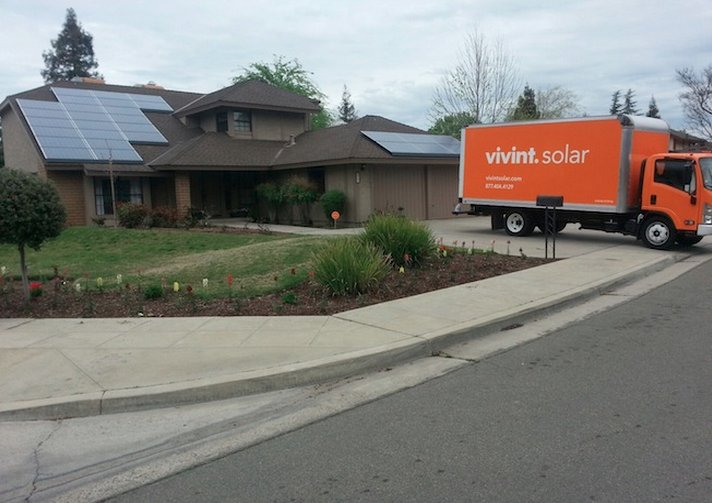I jetted off to GTM's Solar Summit in Scottsdale, Arizona last week, ready to enjoy some deep dives into the state of the solar industry.
Instead, I was inundated with storage.
Right off the bat, in GTM SVP Shayle Kann's opening keynote presentation, we saw the tremendous growth on deck for solar around the world. (Full video coverage of the event is available to Squares like you right here.) But he also cautioned about diminishing returns: At around 10 percent penetration, the duck curve (midday oversupply, challenging evening ramp) starts to become a problem and reduce the marginal value of additional solar installations.
Further price declines alone won't solve this problem. Instead, the duck curve calls for some combination of expanded regional transmission networks, traditional flexible capacity and newer sources of flexibility, like demand response, electric vehicles and, yes, energy storage.
Then came Sunrun CEO Lynn Jurich, who leads the largest pure-play residential solar company in the U.S. (Read my recap of her talk here.)
"What's totally being unappreciated is that storage on the scene completely changes the game, and in my mind makes it inevitable that we move to a majorly distributed system, and that will drive very long-term growth for this industry," Jurich said.
She later added that energy storage "will be transformative for our globe and our children."
Later that day, I led a panel discussion on the future of behind-the-meter solar plus storage, and discovered the late-afternoon session was totally packed.
Companies are selling solar-plus-storage now, albeit in limited volume and in limited locations. For it to flourish, we'll need to see more tariff reforms that create market signals for self-consumption or energy arbitrage. Right now, homeowners have few incentives to store their solar production for later in the day, even if it would be more efficient for the overall grid.
We have yet to see consensus on what kind of rate reform makes the most sense for this -- though several promising proposals are circulating -- or how long it will take to get there. That seems to be the dominant narrative for solar-plus-storage: We know why it would be valuable to have in large numbers, but we're still figuring out how to get on a pathway to a mass scale.
Still, it's instructive to look where the money is heading. Companies that have done well selling solar power are now investing in the ability to provide storage as well. Two major updates happened in the past week alone.

This snazzy orange truck will soon be dropping off solar panels with a side of Mercedes batteries.
Vivint Solar announced an exclusive partnership with the U.S. branch of Mercedes-Benz Energy. That means that all top three residential storage companies now have a dedicated battery partner for solar-plus-storage.
It's too early to know how much business this partnership will drive for either member, but it's a way for newcomer Mercedes to start shipping units before it has a robust set of distribution channels established.
Going further down the solar hierarchy, market share gets very fragmented very fast. Other storage companies won't be able to find partnerships that wield such significant market share.
These solar pairings have so far favored established name brands with big budgets and factories, as seen with Tesla, and LG Chem, which works with Sunrun.
Over in utility-scale territory, 8minutenergy this week revealed it has entered the storage game as well. The major Western solar developer, which controls 12.5 percent of California's utility-scale market, assembled a team with ample experience developing battery projects at California utilities. Now they've accumulated a 1-gigawatt project pipeline.
I caught up with Carl Stills, the VP for storage integration, and Steve McKenery, the VP of storage solutions. They told me how their storage strategy will mirror their solar strategy.
The company specializes in wrangling land rights, interconnection and utility offtakers for solar farms on the order of 100 megawatts or more. The plan is to approach storage in much the same way, working with utilities to find the ideal spots for integrating batteries -- in fact, the company has been factoring storage into its designs for months now.
By outfitting a 100-megawatt solar farm with 100 megawatts of four-hour energy storage, 8minutenergy can promise peak capacity, spinning reserve to offset gas consumption elsewhere and better utilization of transmission lines built for the solar generation. The storage also hedges against future curtailments, making their solar project itself more valuable. (This model looks similar to Lightsource Renewable Energy, a developer eyeing utility-scale solar-plus-storage projects for grid services.)
When you're installing 100 megawatts a pop, it doesn't take many projects to hit a gigawatt. All the more notable when you recall that U.S. storage deployments last year totaled 221 megawatts.
Just how big is LG Chem?
It turns out the LG stands for LARGE. Top-tier batter maker LG Chem has sold 2.6 gigawatt-hours of storage globally, according to an Energy Storage Report interview with Peter Gibson, sales director of the South Korean company's U.S. subsidiary.
To give a sense of the scale here, Tesla said it sold 60 megawatt-hours in the first quarter of 2017. A decade of selling at that rate would equal what LG Chem has sold already.
LG Chem launched its own residential storage product in North America last month; previously it had sold through partnerships with Sunrun and Eguana Technologies.
Gibson also told ESR that the general goal, based on experience in other regions, is to secure 30 percent market share. That's bold, but the company already has manufacturing scale and the staying power to secure confidence in its products, eliminating two barriers that face smaller entrants into the residential market. It arrives well positioned to be a market leader.
Home is where the flow ain't
Those of you looking forward to a nice flow battery in your garage will have to wait a little longer.
Australian residential flow-battery maker Redflow announced Monday that it's dialing back on residential to focus more on remote telecom backup. That's a win for lithium-ion, which now stands virtually unchallenged as the technology of choice for residential applications.
That's not to say it's the best-suited technology for those applications. Redflow says its batteries will last longer and perform better than lithium-ion, but most consumers aren't willing to fork over thousands of dollars more in the hopes that they make it back over 20 years.
Flow batteries are still racking up hours in the field, mostly in the grid-scale, longer-duration configurations where they are most competitive. With a bit more time to prove itself, and a bit more customer awareness, it's conceivable that someone could make another push into the home market. But I wouldn't expect that any time soon.
Get [the batteries] to the chopper!
Speaking of remote telecom backup, Scottsdale-based Fluidic Energy has been quietly chasing that market overseas for years, as I covered here. I learned that the company recently brought its remote microgrid expertise back to the states.
The company recently completed an installation at an isolated communications tower on Mt. Sterling in the Great Smoky Mountains National Park of North Carolina. This tower is so remote, in fact, that it made the most sense to deliver the batteries via helicopter.

Headed down south to the land of the pines, flying my batteries into North Carolina. (Photo courtesy of Fluidic Energy)
The 95-kilowatt-hour zinc-air cathode batteries, now in the commissioning phase, will back up a 10-kilowatt solar installation to power the tower. That would make life a lot easier for Duke Energy, which currently has to trek out there to maintain the 13-acre utility corridor connecting a single overhead wire to the outpost.
If the solar and storage prove capable of achieving self-reliance for the communications tower, Duke can cut the cord and let Mother Nature reclaim all that acreage.
Plenty more mountaintop lookouts, fire stations and communications relays share these conditions. Fluidic built up a track record with remote backup and microgrids overseas, and now it can skip the demo phase and jump straight to real-world applications.
Have you installed a battery using unconventional vehicular support? Send me your stories at [email protected].